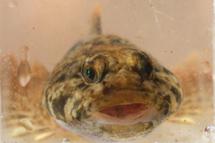saveourplanetearth.com
Call us: (775) 831-1331
The Science of Water at Lake Tahoe
Last July, Steve and Jen McNamara with son, Lucas, were hiking around Griff Creek near Kings Beach Fire Station, when Lucas spied a dead fish that he had not seen before.
Steve recognized that the fish should not have been there so they brought it to UC Davis Tahoe Environmental Research Center (TERC) in Incline Village where it was identified as being a plecostomus, a fresh water, algae-eating fish, commonly found in household aquariums.
Officials at TERC concluded that a misguided aquarium owner released the fish either into the lake or the creek, where it couldn’t survive most likely due to the cold conditions or the lack of available food. Besides being detrimental to the fish, releases such as these can be a danger to the lake if the non-native fish does survive, finds a way to breed and perhaps begin establishing a significant population.
The Tahoe Environmental Research Center conducts research on the water quality, physical processes and ecology of Lake Tahoe and its watershed, in addition to offering learning programs to the public. The McNamaras knew to bring the non-native fish to them because they had previously visited the Tahoe Science Center, located on the campus of Sierra Nevada College.
The Tahoe Science Center offers science-related activities, a monthly lecture series and sponsors special events for the public, as well as offering a virtual science lab, a “Shaping Watersheds” virtual sandbox and more.
TERC monitors and studies water quality and clarity, conducting regular Secchi Disk clarity depth tests, utilizing a simple instrument used since the 1960s.
Water clarity is affected by the amount, or lack of, dissolved particulates in the water and it’s important to understand the composition of these particulates to completely understand clarity.
TERC uses a variety of instruments to collect data about the water in the lake: a fluroprobe measures the amount of chlorophyll in the water. It also indicates what species of phytoplankton is utilizing the chlorophyll and if individual organisms are dead or alive.
Another instrument measures the size of fine particles; yet another measures conductivity, temperature and pressure. This piece of equipment, the Seabird CTD, also has a sensor which uses light attenuation to measure to what depths phytoplankton can continue to photosynthesize.
This data helps scientists to better understand change over time and through the seasons at Lake Tahoe, to piece together the contributing factors of change to better develop methods to maintain or even reverse loss of clarity.
TERC monitors the Lake Tahoe Nearshore Evaluation and Monitoring Framework equipment, a network that was prepared for the Forest Service by more than a dozen scientists and technical advisors from the Desert Research Institute, the University of Nevada, Reno, as well as scientists from TERC.
Last October, strange increases in water conductivity began occurring at one station. Researchers began hypothesizing why – was it excessive runoff? Did a new underwater spring open into Lake Tahoe? Were contaminants entering the lake?
The mystery wasn’t solved until TERC diver, Brant Allen, inspected the station and found that a Paiute sculpin had moved into the cell. The visiting fish, dubbed “Nemo”, had been returning to rest in the cell each afternoon at approximately the same time, causing spikes in conductivity.
The nearshore sensors now have mesh covers and Nemo has to find another place to sleep.
TERC this week is leading the 2015 Science Expo, when approximately 1200 students will be descending upon the center to participate in hands on science activities, interactive games and demonstrations.
The event is designed to create interest and stimulate excitement about science in the young minds of tomorrow’s inventors, researchers, biologists and perhaps marine biologists.
The event continues throughout the week for the visiting school students but there is a public event Wednesday afternoon from 3:45 to 6 p.m. at the center on the SNC campus in Incline Village.
Admission is free – plan on learning about health and nutrition, the human body, ecosystems, food webs, life cycles, trait inheritance, adaptation, biodiversity and more.
Science Expo is hosted by UC Davis TERC and Tahoe Expedition Academy, with support from the Rotary Club in Tahoe-Incline and free ice cream provided by Susie’s Scoops.
See the TERC website, terc.ucdavis.edu for more information on this event and other upcoming events, as well as State of the Lake and other technical reports, information about species that live in the lake: from micro-plant organisms to invasive species such as Asian clams to introduced sport fish such as the kokanee salmon.
Paiute Sculpin
Photo courtesy of Matt Young



